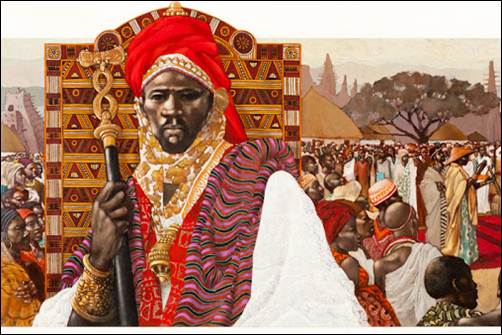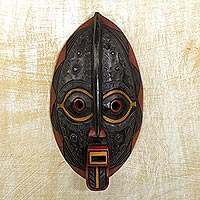Mali is rich in visual and textile
arts. Many of these arts are tied to day-to-day living, though. Textile arts
are one of the most common artistic styles easily seen in Mali. Both men and
women wear brightly colored, patterned cloth. They’re known for a type of cloth
style known as mud cloth, which has abstract patterns made from mud. Typically,
this is a woman’s art.
To go along with the art of textile
making, many Malians are adept at making jewelry. Because of Mali’s history,
gold is the preferred metal in jewelry for most of the people; however, the
Tuaregs prefer silver. Styles depend on personal taste and on tribe. Some
tribes have their own particular style, sometimes with patterns that reflect
their history or ancient religious views. Shells, clay, amber, wood, and stone
are also used in making jewelry.
They’re also known for their
woodcarving. Like many other cultures in Western Africa, wooden masks and
sculptures are a part of many Malian cultures. The masks are actually used to
disguise the person wearing the mask when they impersonate ancestors or gods.
Some tribes, like the Dogon, believe that when a person dies, their spirit
stays in the mask, so therefore masks are an important part of funeral rites. The
idea of gender is very important and much of their society is drawn on gender
lines. In their sculptures, body features are often exaggerated to make the
distinction between genders.
Mali has a particular unique type of
architecture, at least different than most other building types in Western and
Northern Africa. Many of the buildings (especially mosques) here are built
using sun-dried mud on top of tree branch beams. Even the shapes of buildings
will vary slightly from other regions as well.
 |
| Askia the Great |
Even as far back as the early 1500s,
historians have noted the importance of literature in Mali. One of the great
military leaders and emperors of the Songhai Empire, known as Askia the Great,
was credited with promoting universities and Malian education at the time. Not
only bringing in some of the world’s greatest scholars, he also built one of
the largest book publishing centers in this region of Africa. One early explorer
wrote about this area, saying that the demand for books is huge, especially
from the North African states, and that Malians earn more profit from producing
books than any other industry.
 |
| The djali from Mali (come on, it rhymes) |
Like other areas of Africa, Mali’s
literature is rooted in the traditions of the djali (or sometimes spelled jali, jeli, djeli, or sometimes referred
to as a griot). Djalis were an
integral part of the Mali Empire and had a great responsibility: they are often
quipped as walking history books, but essentially that’s what they were in a
nutshell. But not exactly. Yes, they were great storytellers and musicians who
retell historical stories and family traditions, but they also work in satire,
gossip, political commentary, praise songs, among other topics. One of the most
well-known historians, Amadou Hampâté Bâ, spent a large part of his time
studying these traditions.
Some popular Malian writers include
Yambo Ouologuem (known for his book Le
Devoir de Violence, it was raked with controversy over plagiarism), Maryse
Condé (descended from the Bambara people and writes on their culture, although
she lives in the French Antilles), Massa Makan Diabaté (known for his work The Epic of Sundiata and the Kouta
Trilogy, he’s a descendent of griots), Fily Dabo Sissoko (author and political
leader, writing about the Negritude movement, died in prison), and Moussa
Konaté (teacher, writers, playwright).
Up next: music and dance




No comments:
Post a Comment